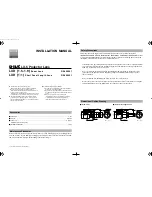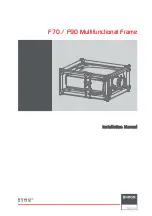
69rlq62d-f714peg4 * Memec (Headquar
ter
s) - Unique
Tec
h,
Insight,
Impact
MAR
VELL CONFIDENTIAL,
UNDER ND
A# 12101050
69rlq62d-f714peg4 * Memec (Headquar
ter
s) - Unique
Tec
h,
Insight,
Impact
MAR
VELL CONFIDENTIAL,
UNDER ND
A# 12101050
69r
lq62d-f714peg4 * Memec (Headquar
ters) - Unique
T
ech, Insight, Impact * UNDER ND
A# 12101050
MAR
VELL CONFIDENTIAL - UNA
UTHORIZED DISTRIB
UTION OR USE STRICTL
Y PR
OHIBITED
PXA300 Processor and PXA310 Processor
Vol. I: System and Timer Configuration Developers Manual
Doc. No. MV-TBD-00 Rev. A
CONFIDENTIAL
Copyright © 12/13/06 Marvell
Page 444
Document Classification: Proprietary Information
December 13, 2006
Not approved by Document Control. For review only.
16.4.4
System Considerations: System Bus Access Latency
The system has seven masters (switch (core), DMA, LCD, Intel
®
Quick Capture Camera Interface, USB 1.1 full
speed host, 2-D graphics, and USB 2.0 high speed client) on the two system buses (see
). All accesses
to the memories from any of these masters flow through the switch to one of the memory controllers (see
for more information). The memory controllers all have internal buffers that work
as a FIFO. All requests to a particular memory are executed in order.
Programmers can program the system-bus arbitration priorities enabling one of the masters on the bus to access
the memory switch with higher priority than others.
To compute the worst-case latency for an external-memory transfer in a very busy system, where all the
system-bus masters are trying continuously to access one of the memories (assuming that the master has highest
priority programmed in the arbiter), programmers must account for these transfers ahead of the current master
accessing the external bus:
•
One current memory access
•
Up to four pending transfers in the relevant memory controller queue
•
Two transfers on the system bus
•
Any other transfers pending within the master
•
An SDRAM refresh
Because any of the internal memory accesses generally are lower in latency than the external memory accesses,
any accesses having a critical latency requirement (such as USB host isochronous-buffer data) should be placed
in internal memory.
















































